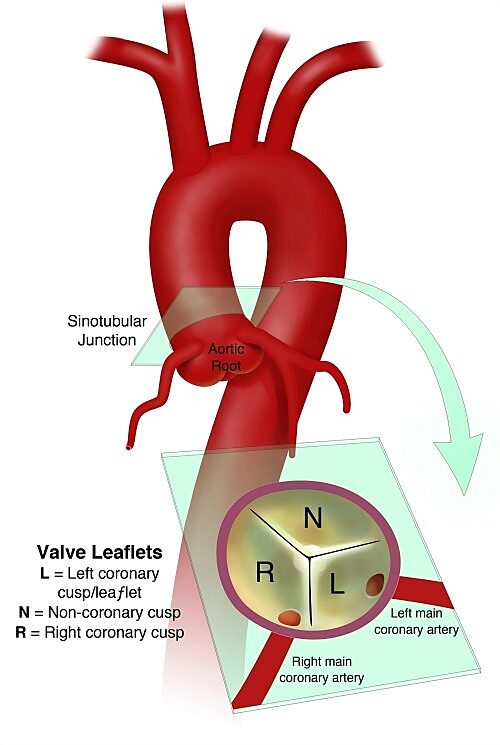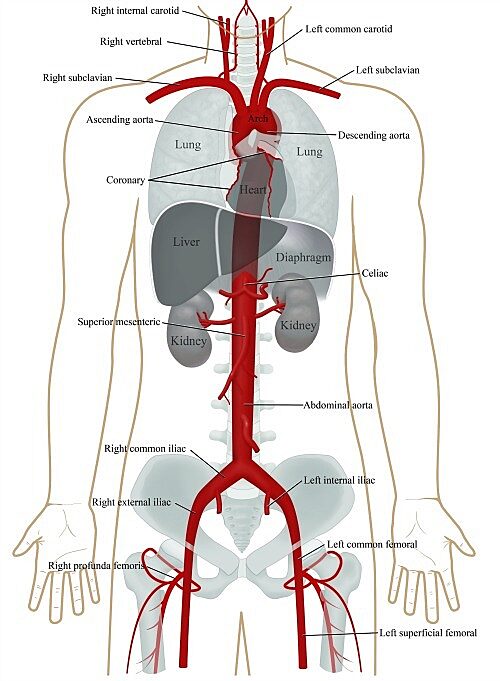Aorta anatomy
This health topic is part of the heart and vascular care medical specialty. The aorta is the largest blood vessel in the body. This artery is responsible for transporting oxygen rich blood from your heart to the rest of your body. The aorta begins at the left ventricle of the heart, extending upward into the chest to form an arch. It then continues downward into the abdomen, where it branches into the iliac arteries just above the pelvis.
Anatomy of the aorta
Considering the significant portion of the body that the aorta spans, it is helpful to break it down into the following four sections:
Aortic root
The aortic root is the portion of the aorta that is attached to the heart. A major part of the aortic root is the aortic valve, which allows blood to flow from the heart to the rest of the body when it is open and prevents blood from flowing backwards into the heart when it is closed. Like the rest of the body, the heart also needs to get blood. The left and right main coronary arteries branch off of the aortic root to provide the needed blood to the heart.
Ascending aorta
The ascending aorta begins at the sinotubular junction of the aortic root and extends up and out from the heart until it connects with the aortic arch.
Aortic arch
The aortic arch is the portion of the aorta that is in the shape of an arch and connects the ascending aorta with the descending aorta. The major arteries that stem from the arch are: the brachiocephalic artery, the left carotid artery and the left subclavian artery. The brachiocephalic artery is responsible for carrying blood to the right arm and the right side of the brain, the left carotid artery provides the left side of the brain with blood and the left subclavian artery carries blood to the left arm.
Descending Thoracic Aorta
The descending aorta begins at the end of the aortic arch and continues down into the abdomen. There are two parts to the descending aorta.
The thoracic aorta runs from the aortic arch to the diaphragm, which is the point of separation between the chest cavity and the abdominal cavity. It provides blood to the muscles of the chest wall and the spinal cord.
Abdominal Aorta
The abdominal aorta runs from the diaphragm and ends just above the pelvis, where it divides into the iliac arteries. There are five arteries that branch from the abdominal aorta: the celiac artery, the superior mesenteric artery, the inferior mesenteric artery, the renal arteries and the iliac arteries. The celiac artery provides blood to the stomach, liver and pancreas; the superior mesenteric artery supplies blood to the small intestine; the inferior mesenteric artery supplies blood to the large intestine; and the renal arteries provide blood to the kidneys as well as the muscles of the abdominal wall and the lower spinal cord. The end of the abdominal aorta branches into the iliac arteries, which supply blood to the legs and the organs in the pelvis.

